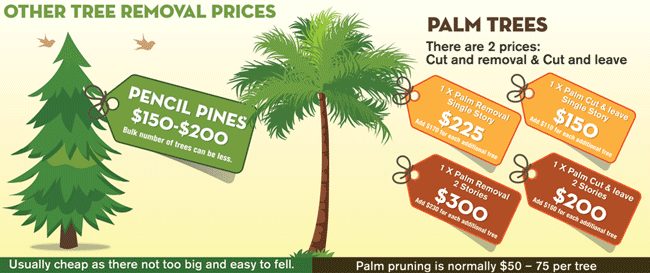Seasonal Tree Treatment: When And Just How To Prune For Ideal Results
Seasonal Tree Treatment: When And Just How To Prune For Ideal Results
Blog Article
Authored By-Tange Gustavsen
When it concerns seasonal tree cutting, timing and technique are crucial for your trees' health and development. You might be stunned at just how much a simple cut can motivate brand-new life. Knowing when to trim inactive trees versus flowering ones can make all the distinction. However it's not practically when; it's additionally regarding just how you do it. Allow's explore the best techniques to ensure your trees thrive.
Understanding the very best Seasons for Tree Trimming
When's the most effective time to cut your trees? The solution hinges on understanding the periods. Late winter season to very early spring is often suitable, as trees are still inactive. This timing lessens anxiety and promotes healthier growth when they stir up.
However, if you're managing flowering trees, take into consideration cutting right after their blossoms fade. This guarantees you won't remove next year's flowers.
In summer season, light cutting can help maintain shape and get rid of any dead or diseased branches. Prevent heavy pruning during loss, as trees are getting ready for dormancy and might struggle to heal.
Eventually, understanding your tree varieties and neighborhood climate will certainly direct your trimming schedule. Pick wisely, and your trees will thrive wonderfully year-round.
Essential Trimming Strategies for Healthy Trees
Pruning your trees effectively is important for their wellness and durability. Beginning by using clean, sharp tools to make precise cuts, which assists protect against damages and disease.
Focus on getting rid of dead, harmed, or crossing branches initially; this encourages much better air flow and sunlight penetration. When cutting, Stump Grinding Rates for an angle that promotes healing and decreases the risk of rot. Always trim just outside the branch collar, the swollen location where the branch meets the trunk, to boost recovery.
For young trees, form them by selectively pruning to establish a strong structure. Finally, prevent over-pruning; removing excessive foliage can stress your tree.
Common Mistakes to Prevent When Trimming
Numerous homeowners make critical errors while pruning their trees, which can result in long-term damage.
One typical mistake is over-pruning, where you get rid of too many branches at once. This can worry the tree and prevent its development.
One more error is utilizing plain devices; sharp, clean tools make cleaner cuts that recover much faster.
Do not neglect to trim at the incorrect time of year; wintertime is usually best for lots of types, while summer season is perfect for others.
Also, avoid cutting https://www.live5news.com/2020/01/18/dominion-energy-suspends-plan-cut-trees-sullivans-island/ to the trunk or leaving stubs, as both can welcome insects and conditions.
Last but not least, stopping working to step back and evaluate the tree's overall form can result in irregular development.
Keep these blunders in mind for healthier, thriving trees!
Verdict
Finally, seasonal tree trimming is critical for your trees' health and development. By trimming at the right times-- late wintertime for inactive trees and right after blooms for flowering varieties-- you'll encourage vibrant vegetation and blossoms. Remember to utilize clean, sharp tools and adhere to appropriate methods to stay clear of damage. Stay clear of heavy pruning in the fall and stay free from usual blunders. With these tips in mind, you'll keep your trees growing all the time!
